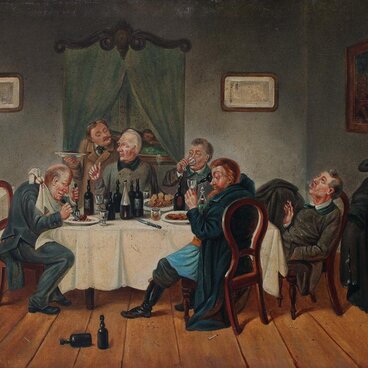The exhibition of the Sevastopol Art Museum named after Mikhail Pavlovich Kroshitsky features a painting titled “Place de Grève in Paris” by the French artist Nicolas-Jean-Baptiste Raguenet.
The famous Place de Grève became widely known thanks to the novels by Alexandre Dumas Victor Hugo, and Patrick Süskind. From the Middle Ages, Place de Grève was the site of public executions attended by many people. On April 25, 1792, upon the order of Louis XVI, the guillotine was used for the first time. Later, the king himself was also beheaded by guillotine.
The painting from the museum collection depicts the long-awaited celebration dedicated to the birth of Princess Marie Thérèse, the granddaughter of Louis XV, in the summer of 1746. Marie Thérèse was the daughter of Louis, Dauphin of France, and his wife, María Teresa Rafaela of Spain. The young couple loved each other dearly, but their happiness was short-lived. Several days after the girl was born, her mother passed away.
This painting shows a cityscape with numerous strollers on the embankment and square. Boats glide along the river in the foreground, with men and women sitting under canopies in some, and lone rowers in others. Soldiers in red uniforms line up on a barge. Children run and citizens walk along the bright pavement. Everyone is waiting for the festive fireworks.
The artist Nicolas-Jean-Baptiste Raguenet (1715–1793) focused on depicting squares and buildings in Paris. He sought to capture the city’s unique beauty and depict with topographic accuracy the unparalleled architectural ensemble of the square, combined with scenes of folk festivals. The greenish-gray color palette of the painting gives the impression of airiness. Numerous carefully constructed perspective views of 18th-century Paris are a kind of chronicle of the city. The artist became the city’s remarkable historian.
Nowadays, numerous paintings by Nicolas-Jean-Baptiste Raguenet with views of Paris are kept in the Musée Carnavalet, the Parisian history museum.


